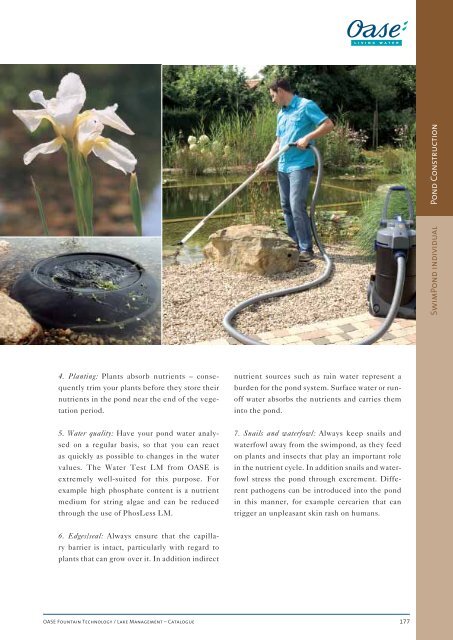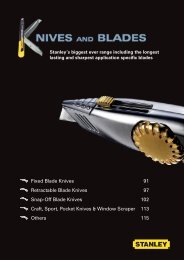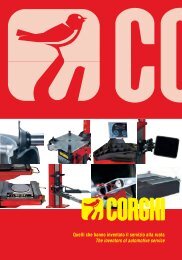Oase Water Technology Swim Pound 2012(484KB) - AlMahroos.com
Oase Water Technology Swim Pound 2012(484KB) - AlMahroos.com
Oase Water Technology Swim Pound 2012(484KB) - AlMahroos.com
- TAGS
- oase
- www.almahroos.com
You also want an ePaper? Increase the reach of your titles
YUMPU automatically turns print PDFs into web optimized ePapers that Google loves.
4. Planting: Plants absorb nutrients – consequently<br />
trim your plants before they store their<br />
nutrients in the pond near the end of the vegetation<br />
period.<br />
5. <strong>Water</strong> quality: Have your pond water analysed<br />
on a regular basis, so that you can react<br />
as quickly as possible to changes in the water<br />
values. The <strong>Water</strong> Test LM from OASE is<br />
extremely well-suited for this purpose. For<br />
example high phosphate content is a nutrient<br />
medium for string algae and can be reduced<br />
through the use of PhosLess LM.<br />
6. Edges/seal: Always ensure that the capillary<br />
barrier is intact, particularly with regard to<br />
plants that can grow over it. In addition indirect<br />
OASE Fountain <strong>Technology</strong> / Lake Management – Catalogue<br />
nutrient sources such as rain water represent a<br />
burden for the pond system. Surface water or runoff<br />
water absorbs the nutrients and carries them<br />
into the pond.<br />
7. Snails and waterfowl: Always keep snails and<br />
waterfowl away from the swimpond, as they feed<br />
on plants and insects that play an important role<br />
in the nutrient cycle. In addition snails and waterfowl<br />
stress the pond through excrement. Different<br />
pathogens can be introduced into the pond<br />
in this manner, for example cercarien that can<br />
trigger an unpleasant skin rash on humans.<br />
177<br />
Pond Construction<br />
<strong>Swim</strong>Pond individual





